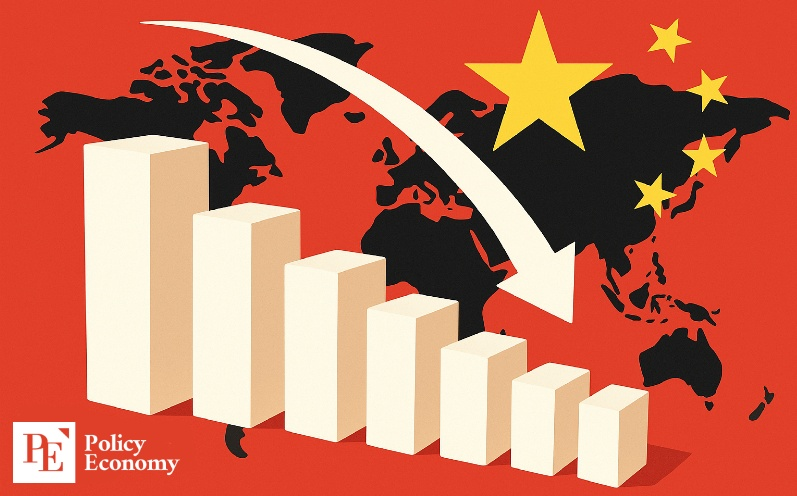China’s “Export Allowed” Claim Stalled by Bureaucracy, Rare Earth Flows Still Blocked
Input
Modified
Conflicts Between Government Departments Create Confusion Selective Approvals Result in Effective Blockade Chinese Rare Earth Producers Facing Collapse

Over Three Weeks After China Eased Rare Earth Export Controls, Bureaucratic Red Tape and Arbitrary Procedures Continue to Choke Actual Supply. South Korea’s Imports Have Plunged by 76%, and Major Importers Like Japan and Europe Are Voicing Strong Opposition to China’s Selective Export Approvals. While Beijing Uses Strategic Resource Controls for Diplomatic Pressure, the Sharp Drop in Export Volume Is Now Triggering Domestic Industry Backlash. With Many Importing Countries Accelerating Supply Chain Diversification, Analysts Warn That China’s Current Export Policy May Backfire.
Officially “Resumed Exports,” but Reality Is “Selective Approvals”
According to Nikkei Asia on June 25, since switching its export controls on seven critical rare earth elements like samarium and dysprosium to a licensing system amid its trade war with the US, China has been causing worse-than-expected bottlenecks due to application delays and complex paperwork. Earlier this month, Beijing began requiring domestic rare earth producers to submit detailed online reports on transaction volumes and customer information.
Producers must now enter monthly production and inventory figures by the 10th of each month and apply for a traceability code before making sales. Export-related administrative requirements have also tightened further. Export licenses now demand disclosure of sensitive details such as item specifications, buyer identity, end-use purpose, and logistics routes. Compounding the issue, approval authority is split between central and local governments, creating inevitable regional discrepancies in processing speed. For the same company, outcomes may vary depending on the province handling the application.
This bureaucratic gridlock is creating severe uncertainty for businesses. Previously, clear regulations at least allowed firms to plan responses. Now, with unclear criteria and procedures, even scheduling supply deliveries is unpredictable. Repeated permit delays and document requests are causing firms to miss export windows or face canceled contracts. Given how time-sensitive rare earth shipments are for many industrial buyers, customs clearance delays are increasingly leading to broken deals.
For importers, the situation is equally troubling. UK-based industrial magnet producer Magnet Applications has reportedly been denied approval multiple times by Chinese authorities for lacking end-user information. A company representative stated, “We have about USD 1.3 million worth of magnets waiting for shipment, but customs officials are making physical export nearly impossible. Despite past dealings, we’ve never experienced delays like this before.”
Japan, EU Issue Stern Warnings, Suggest Possible Retaliation
Major importing nations are reacting with growing frustration. While China officially claims to have reopened rare earth exports, the actual trade flow remains choked. Countries including South Korea, the EU, and Japan broadly agree that current Chinese restrictions make exports functionally impossible. Governments and industries alike are criticizing Beijing’s contradictory stance, with diplomatic warnings escalating.
The European Commission recently stated in a briefing, “State-controlled strategic material exports that rely on arbitrary decision-making violate international trade principles.” The Commission added pointedly, “If China doesn’t want reciprocal actions from us, this practice should stop.” Japan’s government also sharply criticized the policy, saying, “China is only allowing certain routes through selected domestic suppliers and is arbitrarily limiting export destinations. This amounts to de facto discriminatory allocation.”
South Korea is no exception. According to industry data, imports of Chinese rare earths plunged roughly 76% year-over-year this May. Analysts say this sharp drop is not due to falling demand but rather widespread “permit omissions” and “customs failures.” Cases of repeated document revision requests or unexplained application rejections have become common, raising concerns about administrative fairness.
As a result, there is growing consensus that China’s rare earth export licensing should be viewed as more than just short-term pressure. Rare earths are essential to key industries like semiconductors, electric vehicles, and defense. With rising supply chain uncertainty, many nations are now ramping up their response strategies. Both the EU and Japan have activated multilateral trade dispute channels, and South Korea has begun structurally reassessing its dependency on any single country for rare earth supplies.

Shrinking Supply and Record-Low Exports: China’s Strategy Backfiring
China’s attempt to pressure the international community through strategic material controls is now producing the opposite effect, accelerating global demand shifts and supply chain diversification while weakening its own market position. According to the General Administration of Customs of China, the country’s total rare earth magnet exports for May stood at just 1,238 tons, marking a roughly 53% drop from the previous month. In April, exports had already fallen to 2,626 tons,nearly half of March’s 5,324.6 tons,resulting in two consecutive months of sharp decline. Compared to the same period last year, exports plunged by approximately 74%, signaling an unprecedented contraction.
Efforts by major economies to reduce dependence on China-centered rare earth supply chains are also picking up speed. The United States is investing in refining facilities in partnership with Australia and Canada, while Japan has announced plans to raise its share of non-Chinese rare earth sourcing to over 50%. The European Union is proceeding with legislation to include rare earths under its “Strategic Resource Autonomy Framework,” reflecting a shift from simply avoiding Chinese imports to actively building China-excluded supply networks.
Meanwhile, domestic rare earth producers in China are facing worsening difficulties. With export channels effectively blocked, these companies are forced to rely solely on domestic demand, leading to falling prices, mounting inventories, and reduced production. On top of this, Chinese authorities have implemented an “All-Cycle Rare Earth Management System” that monitors every step from production to transportation and sales. Excessive regulation has drawn heavy criticism from the industry. Delayed production permit renewals, suspended tax benefits, and stricter environmental assessments are pushing many small and medium-sized firms toward closure.
Ultimately, China’s strategy to weaponize rare earths as a diplomatic and strategic asset appears to be backfiring not only on its export markets but also on its domestic industries. Observers across the industrial and diplomatic sectors warn that this miscalculation is undermining both policy objectives and corporate competitiveness. As major economies accelerate the development of rare earth substitution technologies and secure new supply sources, China risks further eroding its position as the dominant supplier of rare earths.





















